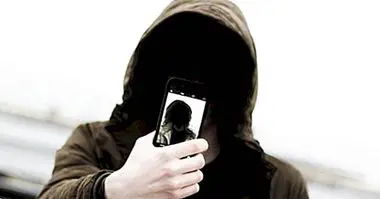What is the difference between evidence, evidence and evidence?
Most people are used to hearing terms such as evidence, evidence and clues. Whether we have read them, seen on television, work in the legal or expert field or simply by general culture, these concepts fall within our normal vocabulary, generally being used as synonyms.
However, although similar, these three words refer to different things. They are elements taken into account, for example, in forensic psychology and, by extension, in the judicial and legal world. However... What are the differences between evidence, evidence and evidence and how do you work with them?
- Related article: "Forensic Psychology: definition and functions of the forensic psychologist"
Its scope of use
As we have seen, the words indicia, evidence and evidence can be used in our usual vocabulary, but they are mainly related to the judicial field. In this regard, these terms are used in order to refer to all those elements that serve to establish relationships between specific elements of a case and hypothesize, reconstruct and demonstrate these relationships .
The aforementioned elements arise from the investigation of the different professionals who investigate the case, being generally collected from a specific scene or extrapolated from the investigation of the assumptions involved.
But even in the judicial field, the terms evidence, evidence and evidence can be misused, having frequent confusions due to the limited delimitation between the different concepts (since the limits can be diffuse depending on the definition that is given to each one) and the fact that in many occasions such delimitation has little importance to be able to become evidence both the evidence and the indications in its judicial use.
- Maybe you're interested: "Legal Psychology: the point of union between Psychology and Law"
Differences between evidence, evidence and evidence
In order to make clear the differences between each of the terms, below you can see the definition of evidence, evidence and the way in which they differ from each other.
Indice: what makes us think of something
Any perceptible element, whether material or not, that results or is implicated in the scene of a crime and that allows you to imagine the existence of a certain circumstance linked to the event or crime investigated.
For example, the existence of a glass at the scene of a crime, the disappearance of an object that should be present or the relocation of furniture on the scene may be indications. These are elements that allow pointing in a certain direction, but the how and where they point has a certain subjectivity on the part of researchers.
In fact, the police investigation usually begins with the collection of evidence, which after further analysis can be used to find evidence.
Evidence: when something shows the existence of a relationship
The evidence is understood as all that element that allows to establish, in a clear way, the relationship between two elements found in the scene of the crime. It can be understood as that picked up sign that clearly reflects a relationship with another element. For example, evidence could be fingerprints on a stolen object or traces of blood or other bodily fluids on a person or object.
Although they may not have a logical sense or may not correspond to what it seems to indicate at the behavioral level (for example, having a victim's blood on clothing does not necessarily imply that the person dressed in it is the aggressor), unequivocal the fact that there is a link (if the blood on the clothes is of a person, said garment has been in contact with the scene of the crime or with the victim).
The evidence is usually obtained through the analysis of the crime zone and the numerous indications found, obtaining objective results through them.
Proof: the element with which one seeks to find the truth
We call proof to all that element or argument that is used in order to prove the truth or falsity of an event . Thus, the evidence is that instrument used to prove a fact judicially and that allows to reach the level of conviction necessary to accept or reject a specific idea or hypothesis.
We can find evidence of two types: Indiciaries or sufficient. We understand by sufficient evidence those that allow to guarantee the implication of the defendant and that can be enough to make a verdict, being extracted from evidences.
With regard to the circumstantial evidence, as you can guess by its name are those that come from clues that by themselves are not determinant.Thus, although they allow to think and indicate the guilt or innocence of the accused, their presence is not sufficient to demonstrate the type of implication of the accused.
Deepening the differences
Although we have what each one of these three terms means, it is possible that the differentiation between them is not completely clear, so a more concrete explanation of the differences between each one is necessary.
As we have indicated, the test can be defined as the element with which it is intended to prove the truth or falsity of something. In this way, we will talk about a test whenever we are using certain evidence or clue with the purpose of demonstrating something. Thus, both evidence and evidence can be evidence when used judicially.
Evidence and clue, however, are the elements that are excluded from each other , differing in that while the second is generally a product or element linked to the crime scene that can point in a certain direction, the evidence can demonstrate per se the existence of a certain reality. In addition, while the evidence is more subjective and depends more on the researcher, the evidence is obtained through the analysis of the indicative elements, resulting to be objective.
Bibliographic references:
- Couture, E.J. (1993). Legal Vocabulary. Depalma editions.
- Royal Spanish Academy. (2005). Pan-Hispanic Dictionary of Doubts. Association of Academies of the Spanish Language.
- Taruffo, M. (2003). Some considerations about the relationship between test and truth. Discussions: Test and knowledge, 3. Miguel de Cervantes Virtual Library: Alicante.



















